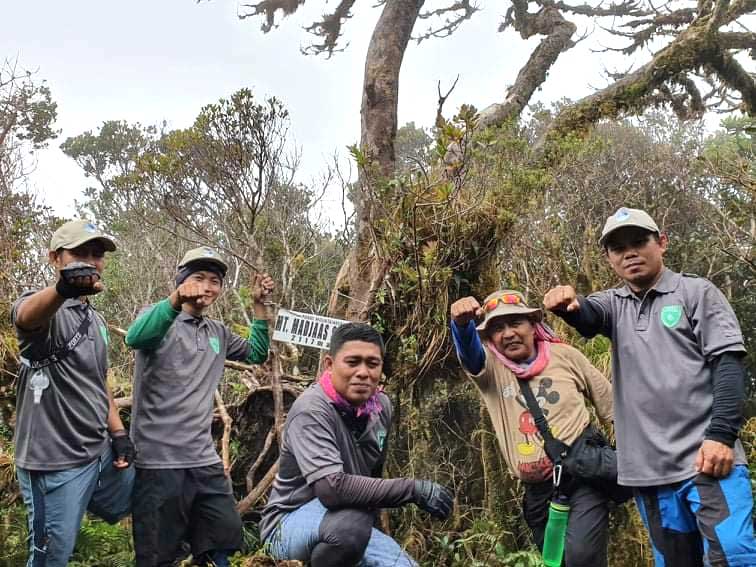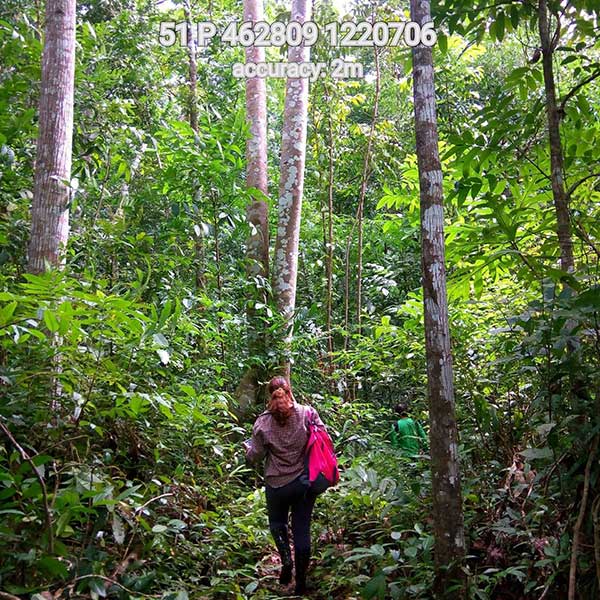
What is it like to be a Forest Ranger or a Forest Extension Officer? How do you bear patrolling on foot the 10,000 hectares per month target? Or what are the challenges in assisting communities that implements the government’s flagship greening program? There are a lot of interesting facts about being forest stewards.
Let us listen to their stories.
It’s a hard, tough climb to the second highest peak at 2,117 meters above sea level (masl) in Western Visayas. As majestic as it looks, Mt. Madja-as also holds diverse biological treasures yet to be discovered but more to be protected.

In this beautiful mountain landscape works Margarito Manalo, Jr., one of the Forest Rangers assigned to the Community Environment and Natural Resources Office (CENRO) in Culasi, Antique which covers the jurisdictional upland territories of the municipalities of Culasi, Sebaste, Barbaza, Caluya, Tibiao, Pandan and Libertad.
Manalo is one of the team leaders who patrol the forestland areas spanning 64,669.00 hectares.
Armed with loving courage and knowledge on forestry laws, Forest Rangers like Margarito would face consequences along their patrol trails that sometimes surprise them and challenge their innovation skills.
At one time during their LAWIN patrol, he and his team found abandoned lumbers in the timberland area of Alojipan, Culasi. Regretfully, they could not ask for reinforcement to haul the forest products since it was a dead spot area, and they could neither send a text message nor make a call.

But this did not deter him and his team to do what they deemed is right within the bounds of the law. The four of them in Lawin Team 1 manually hauled the timbers and dropped it off at the Brgy. Hall for temporary custody.
“The hardest part of our patrol work as rangers is that we risk our health and safety. We do not know the various circumstances we will be in – either we meet up with natural hazards or illegal activities among upland dwellers,” he said in the vernacular.
CENRO Barotac Nuevo in Iloilo covers 14 municipalities, eight of which are timberland areas where Forest Rangers conduct the foot patrol. CENRO Barotac Nuevo’s jurisdictional forestland areas span 29,404 hectares. The 21 Forest Rangers include 11 females.
You might think Forest Ranger is a job only for males, but there is a good number of tough women doing the job as well. One of them is Mila Portaje.
Mila had saw many instances of surging river currents and unpredictable weather disturbances while doing their Lawin foot patrol on steep mountain trails. Lawin is a system which uses a Cyber Tracker app to measure the distance patrolled by the Rangers and detects forest conditions, threats to forest and biodiversity.
They are four in a team. One acts as recorder who takes note and record forest conditions as they patrol around and within forestlands. Another one acts as a guide also called a “spotter” and another member documents the trip while the team leader commands the whole patrol work.
It looked too hazardous a job for women but for Mila, it was a risky job worth taking. “We get to educate the communities about forest safety, we help in the monitoring of wildlife, patrol the area and also provide help in conquering forest fires,” Mila said.
Asked how risky the job is, she answered: “We do patrol in areas with sharp elevation where, if you made one wrong move or step, you may fall and tumble down. So you just pray that you’d be able to get home alive.”
Ryan Vela spent ten years as a Forest Extension Officer (FEO) in various provinces and communities where the National Greening Program (NGP) was implemented. He was once the NGP Focal Person in Negros Occidental before he was assigned in Capiz then Aklan and now, in Iloilo province.
Vela is so familiar with his project sites which are nothing short of high elevation, dangerous uphill climb and downhill trek in rolling terrains. Sometimes, it included jumping over the gulleys and tread narrow cliffs just to reach the project sites enrolled under the NGP for validation.
Aside from the physical exhaustion during validation, he also needs to prepare the paper works for the report, taking careful note of the survival rate of plantation in specific sites.
When asked what made him do the job all these years, he gave straightforward answers: “My work is my bread and butter, but I also wanted to apply the knowledge from my Bachelor in Agroforestry course.”
Once his life was threatened when he was taken by an alleged rebel who interrogated him why he was in the area.
“I really thought that was the end of life. Good thing, my companion Elpidio Cambel III who is also an FEO, talked it out with the man and I was allowed to go,” he recalled. Despite such incidence, Ryan is happy to educate people in upland communities, and share with them the knowledge “so that it would benefit them and the environment,” he added.
As forest stewards, the job was never easy. It takes courage of heart and physical strength to do it. But the protection of our environment – our forestlands especially, is a huge task that is so important it resonates to ecological integrity and food security. Thus, it is a must to be done. (DENR-6)





















